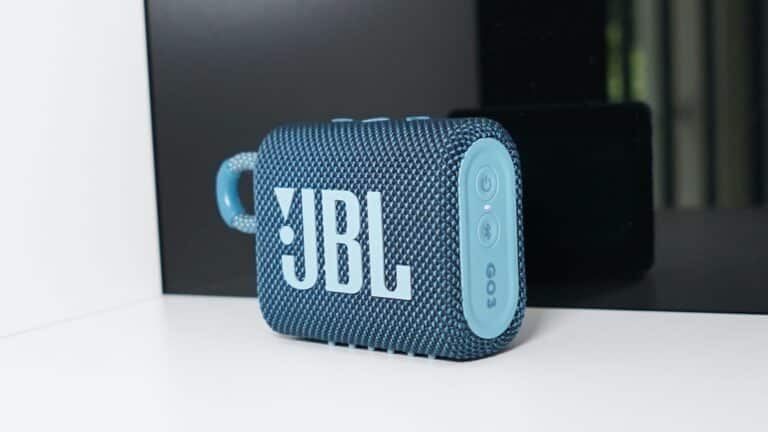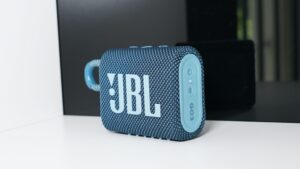The JBL Go 3 is one of the smallest Bluetooth speakers available. The Go 3 emphasizes the “portable” portion of portable speakers, weighing only 7.4 ounces and being compact enough to carry in a pocket.
This method frequently causes problems for audio equipment: tiny speakers are normally better than deep, wide angles, as well as the battery, would have to shrink as a result. However, as our comprehensive JBL Go 3 review demonstrates, the Go 3’s full waterproofing, punchy bass production, and unexpected longevity make it a winner.
What you will see here?
Specifications
- Price: $39.
- Colors: Red, blue, teal, grey, pink, black.
- Size: 3.4 x 2.7 x 1.6 inches.
- Battery life: 5 hours.
- Durability: IP67.
- Weight: 7.4 ounces.
Price and availability
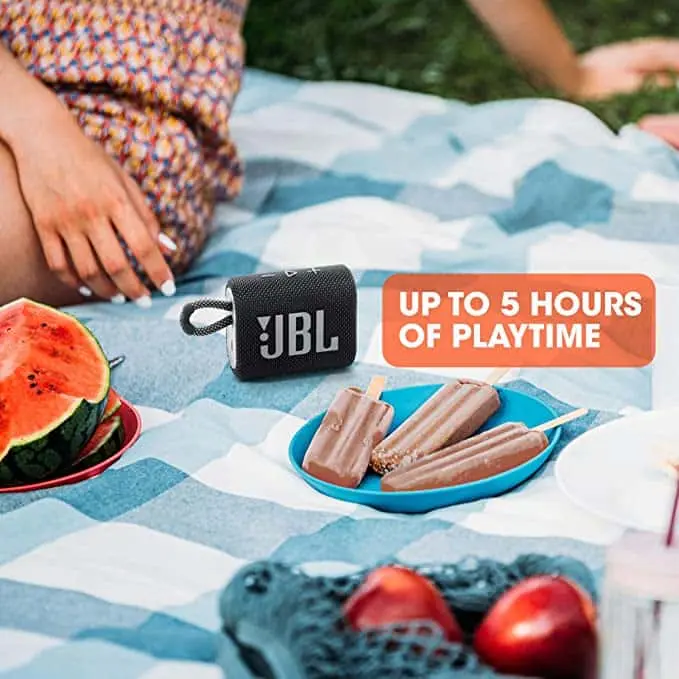
The JBL Go 3 costs $39, placing it in the same price range as that of the Anker Soundcore 2 as well as the Tribit StormBox Micro, all of which are inexpensive Bluetooth speakers. It’s available from a variety of retailers, including
You can choose from a variety of colors, including teal, blue, red, grey, pink, and black. Certain colors may not be available at all vendors.
Design
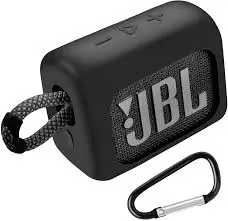
While the original JBL Go 2 was never very attractive, the Go 3’s rounded corners & woven texture are significant upgrades. The redesigned, rubber-reinforced rope loop makes it even more convenient for mobile use.
The Go 3 is somewhat larger than the Go 2 at 3.4 inches broad but only 1.6 feet thick, yet it still fits in your pocket. The Go 3 is among the few worthwhile Bluetooth speakers that really can make the UE Wonderboom 2 look huge, and while it lacks the 360-degree sound of that speaker, it’s even easier to stow in a tiny satchel or bag. It’s even more compact than the StormBox Micro.
Although a skip option would be good, the essentials are available in the shape of volume up/down and a play/pause button. These are located on the speaker’s top, while the power & Bluetooth pairing buttons are located on the right side.
JBL Go 3: Waterproofing

The Go 3 offers waterproof to an IP67 standard, which is the same as luxury waterproof speakers. That implies it should be able to withstand being submerged in up to 1 meter of water or up to 30 minutes, and it’s also dust and dirt-resistant.
If you put it in the bath or a pool, they won’t have to worry about it submerging completely because it floats to a surface unless you hold it down. This should also make retrieval easier.
Because the USB-C charging port is visible, you will have to wait for it to dry off before charging, but the Go 3 otherwise lives up to its ruggedization claims.
Specifications
- Price: $39.
- Colors: Red, blue, teal, grey, pink, black.
- Size: 3.4 x 2.7 x 1.6 inches.
- Battery life: 5 hours.
- Durability: IP67.
- Weight: 7.4 ounces.
JBL Go 3: Audio Performance

The sound profile of the JBL Go 3 is a mixture of big surprises and completely expected limits, given the tiny size. Let’s start with either: this isn’t a fully detailed speaker, and while it can get loud enough to fill a good room, distortions occur before the volume reaches its maximum level.
A Wonderboom 2 is crisper & clearer, so it’s still your best pick if you’re looking for a small waterproof speaker. However, that is more than twice the price of the Go 3. Can JBL’s speaker still deliver good sound on a shoestring budget?
Yes, as it occurs. For this small speaker, the low-end strength and presence are amazing.
The Go 3’s sound characteristic has an overall warmth to it that you don’t often get in small speakers. This is useful for bringing solo instruments to life. Such as the opening guitar in Krewella’s “Surrender the Throne,” and it also works very well in classic recordings that have that “old vinyl” sound.
But, once again, don’t hold your breath. Unless they’re pressed in the mix, higher-pitched components may sound a little buried. But vocals are clear but lack the crispness of more costly speakers.
Battery life

Manufacturers’ battery life predictions are rarely accurate in real-world situations, which is why you shouldn’t take them at face value. However, with the Go 3, the converse is true: you get far longer than the claimed 5 hours from a single charge.
Even though you typically listen at less than 50% level. To get around 10 hours off of the Go 3 before died. That’s Sonos Roam territory, and it takes the sting out of what could have been the Go 3’s worst flaw.
Of course, ten hours isn’t ideal, but compared to 5 hours, it’s sufficient for a day at the park. Keep in mind that if you turn up the level, you won’t be able to stretch it as far.
JBL Go 3: Wireless and setup
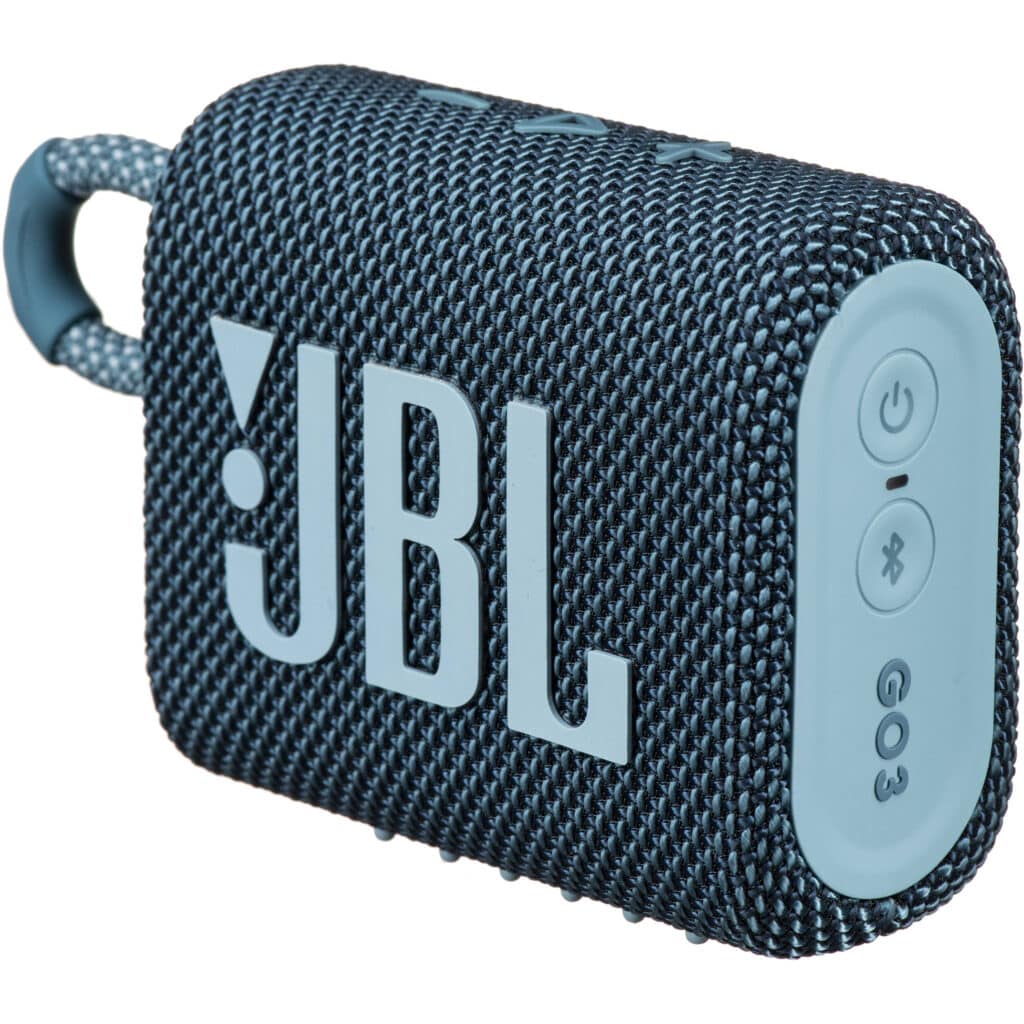
Because the Go 3 lacks an aux port, it relies solely on Bluetooth 5.1 to connect. It is instantly paired with both the Android phone & the Windows PC, and the signal doesn’t drop out even when put a few walls between the speaker as well as the source device.
Because there is no multipoint support, only one user can communicate at a time. But unlike the Charge 5, you can’t use multiple Go 3s to form a stereo pair or a PartyBoost network. This is a little frustrating, and to get the most of the Go 3. You’ll need to get out and about with it. This isn’t the type of speaker you’d use in a surround sound audio or desktop arrangement.
Conclusion
These smallest speakers always will make trade-offs, however, the JBL Go 3 makes a bargain that benefits you in the end. Its robustness and portability are difficult to surpass. Especially for the price, and even the relative flaws of sound quality & battery life are still fairly decent for $39.
If you can afford it, the Wonderboom 2 is a better choice. Although the Go 3 holds up to the $49 StormBox Micro as well as an accidental dive in the water.


